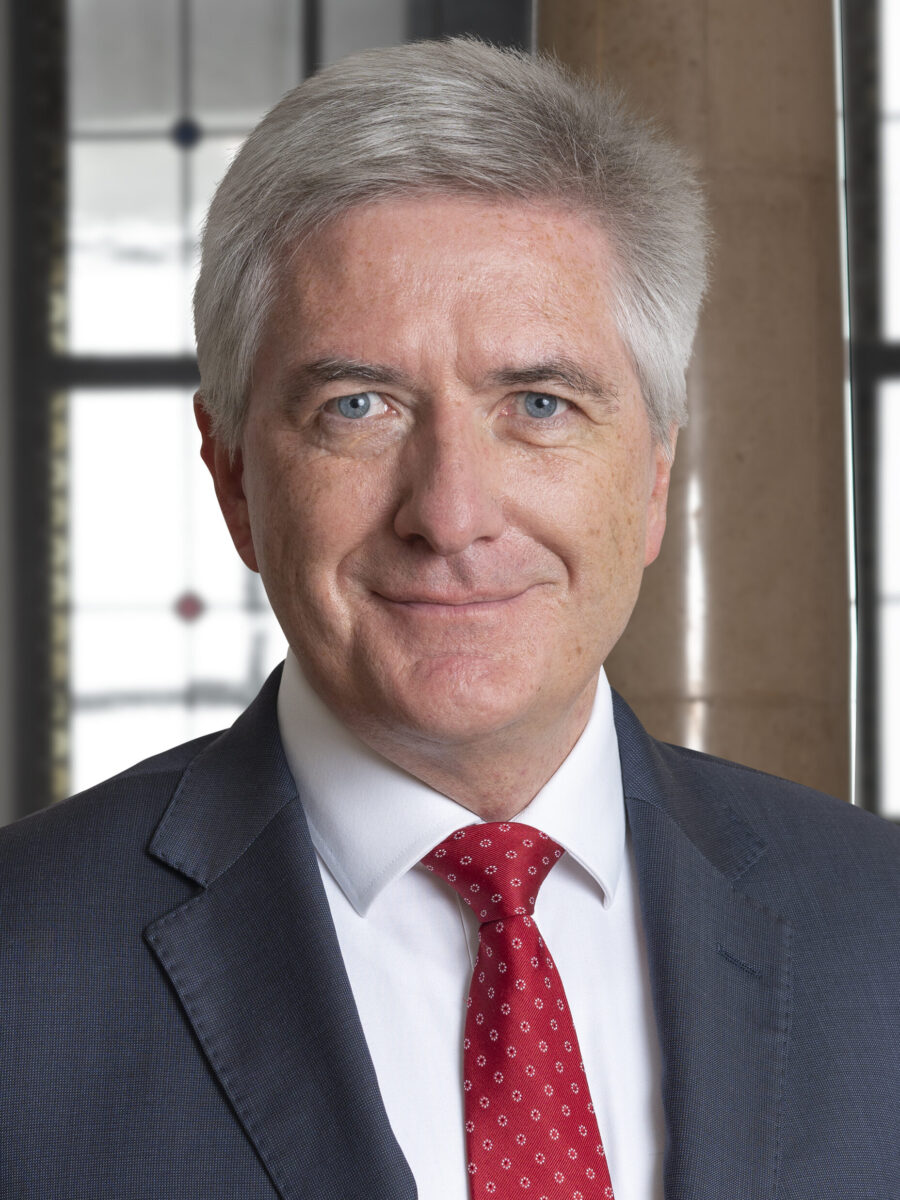In a nutshell
Uncertainty about growth and inflation remains unusually high. So far, both have proved unexpectedly robust. Higher central bank interest rates loom for longer
We expect the European and Chinese economies to recover somewhat in spring, while the extent of the impending downturn in the US is completely unclear.
Until the picture becomes clearer, the back-and-forth on markets will continue, especially since swings in both directions seem to be limited – on the one hand by fundamental developments, on the other by the largely still low investor positioning.
Portfolio positioning at a glance
Due to our equity focus on Europe and the emerging markets, we benefited from the equity rally at the beginning of the year. However, we did not chase this development, but repeatedly reduced the equity quota in several small steps towards neutral. Later in February, we finally reduced equities to a slight underweight by further reducing comparatively expensive US equities. We continue to favour European and emerging-market equities. In return, we increased our holdings of short-dated euro bonds in order to take advantage of the renewed strength of the US dollar to further reduce our US dollar exposure. Within bonds, we had positioned the duration only slightly below neutral after the rise in yields in February. The focus remains on corporate bonds and emerging-market bonds. Our broad positioning has a clear focus on commodities. In particular, we believe that industrial metals and energy commodities have become relatively more attractive since the beginning of the year. For diversification purposes, we have also built up a position in many strategies that benefits from a steepening of the US yield curve after it has inverted significantly.Berenberg Asset Allocation
First quarter review: January too good to be sustainable
It has long been our view that equity markets would bottom out in the second half of 2022 and then recover at the turn of the year, not least given the prevailing strong pessimism. Therefore, despite the multiple risks, we have not been underweight equities since the end of Q3 2022. The strong performance at the beginning of the year was triggered by declining inflation and a more robust economy. With bond yields rising again in February, however, equities also had a harder time and gave up some of their gains. In the end, however, equities led the way in Q1, especially European stocks. Bonds also performed positively, especially emerging-market bonds. Gold rose as well, while industrial metals and especially oil gave back some of last year's gains. The EUR/USD exchange rate remained almost unchanged.Clearly opposite trends to 2022 in equities, especially in Europe, bonds and oil. Gold again with positive return.
Higher for longer: inflation and monetary policy remain in focus for the markets
Inflation has been falling, but at a slower pace than expected, for example as wage increases offset base effects in energy and industrial metals. The decline in the core inflation rate could thus remain limited for the time being. In February, the euro core inflation rate even rose from 5.3% to 5.6%, while headline inflation fell only slightly from 8.6% to 8.5%. The US core inflation rate for February also surprised to the upside. Inflation, together with central-bank policy, therefore continues to determine capital market developments – equities and bonds are clearly in sync. Thus, the expected 10-year US real yield, ie the yield on 10-year inflation-indexed government bonds (TIPS), and the stock market are moving almost exactly in opposite directions.
Inflation and monetary policy continue to drive financial markets
Real yields on 10-year US government bonds continued to determine the direc-tion of equity markets.
The equity rally at the beginning of the year was driven by real yields falling by almost 50bp in the wake of burgeoning hopes for a swift end to interest rate hikes by the US Federal Reserve. From early February, however, real yields rebounded to the levels seen at the start of the year as inflation proved more persistent and the economy more robust.
Higher for longer: Growth and inflation surprise to the upside
Economic and inflation data in the US as well as in the Eurozone have been higher on average than expected by the consensus in recent months.
The shock of the failure of two regional US banks in mid-March caused real yields to plummet briefly. However, this development is not likely to be sustainable as the subsequent implicit guarantee by the US authorities for bank deposits quickly stabilised the situation. Markets should again price in higher inflation and higher central bank interest rates for longer.
This environment is in line with our expectation that inflation will remain a key driver for markets in the coming years. After all, the supply bottlenecks in commodities and labour continue to drive inflation in the medium term and are likely to lead to rising inflation again and again as growth picks up – inflation is not only likely to be structurally higher, but also more volatile. This means that, at best, the inflation trend will temporarily fade into the background and the market focus will shift to growth. We should thus continue to find ourselves primarily in an environment of higher synchronisation between equities and bonds.
Hard, soft or no landing in the US?
A temporary change in market focus remains likely, however, if inflation falls more sharply in the course of spring and summer due to base effects. Then economic growth, and with it the question of whether the US economy will experience a soft landing or perhaps a notable recession, is likely to dominate market activity. The longer the economy proves robust and inflation and central-bank interest rates remain high, the harder the landing could ultimately be. Higher interest rates for longer not only lead to financing problems and loan defaults, but also to risks in the real estate sector. In many regions, eg Australia, New Zealand, Sweden and the UK, property prices are already declining significantly. The political drama surrounding the necessary increase in the US debt ceiling is also likely to cause unrest into the summer. Experts currently estimate that, without raising the debt ceiling, the US government will run out of money in August or September at the latest. It is not unlikely that the political wrangling will weigh on capital markets, at least temporarily, as time passes without an agreement. All of this suggests bumpy markets as the US economy is landing.Probably a tough spring and summer for financial markets
Developments since the beginning of the year reinforce our long-term view that the interest rate turnaround is complete, that exceptionally low interest rates are a thing of the past and that will not return quickly. This is because inflation will not only be a temporary phenomenon, but will also be structurally higher and fluctuate more significantly. This weighs on the valuations of all investments. One should not assume that interest rates will fall towards zero again in the medium term and thus boost equity valuations, especially since equities have already priced in an economic recovery (lower chart). In addition, higher financing, wage and material costs are likely to weigh on profit margins and thus limit earnings growth. This means that bonds, which continue to offer notable yields, and commodities are at least as attractive as equities in the medium term – all asset classes thus offer positive return expectations for the coming years, and these are closer together than they have been for a long time, especially when viewed on a risk-adjusted basis. This continues to speak in favour of a broad, balanced positioning for the risk-reducing use of all diversification advantages, especially since the high level of uncertainty about the further development of the economy – now with less extreme investor positioning once again – also speaks against a very focused portfolio. We expect better opportunities to increase risk positions later this year.Equity markets are already pricing in an economic recovery
The rally in global equities already anticipates a rise in the global manufactur-ing Purchasing Managers' Index (PMI) to well above 50 in the second half of the year.
Author

Prof. Dr. Bernd Meyer
Prof. Dr. Bernd Meyer has been Chief Investment Strategist at Berenberg Wealth and Asset Management since October 2017, where he is responsible for discretionary multi-asset strategies and wealth management mandates. Prof. Dr. Meyer was initially Head of European Equity Strategy at Deutsche Bank in Frankfurt and London and, from 2010, Head of Global Cross Asset Strategy Research at Commerzbank. In this role Prof. Dr. Meyer has received several awards. In the renowned Extel Survey from 2013 to 2017, he and his team ranked among the top three multi-asset research teams worldwide. Prof. Dr. Meyer is DVFA Investment Analyst, Chartered Financial Analyst (CFA) and guest lecturer for "Empirical Research in Finance" at the University of Trier. He has published numerous articles and two books and received three scientific awards.



